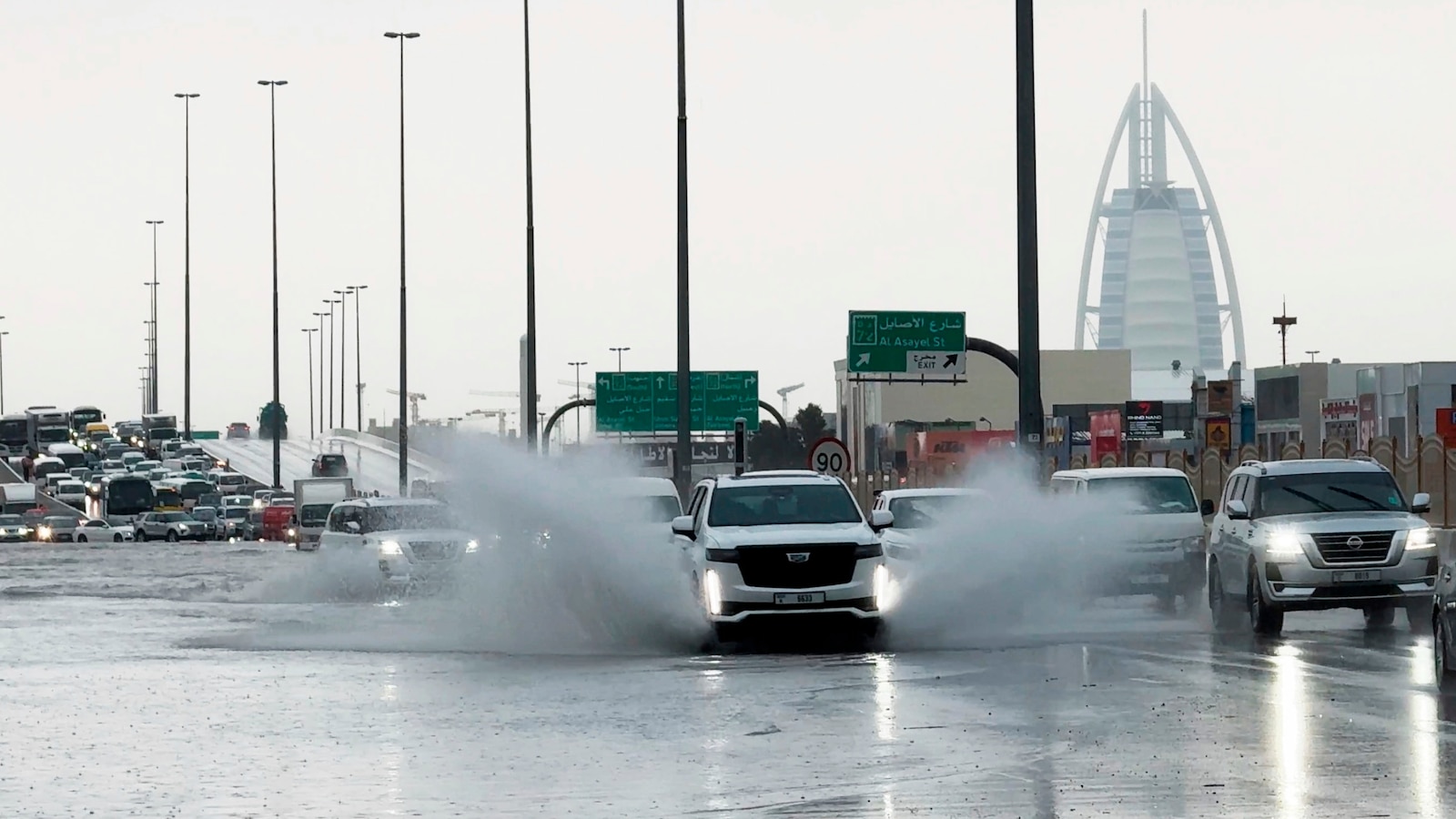Dubai was hit with severe flooding on Tuesday after two years’ worth of rain fell in just 24 hours, records show.
Over a half foot — 6.26 inches — of rain was recorded in the United Arab Emirates city between 10 p.m. local time Monday and 10 p.m. local time Tuesday, according to the Dubai Meteorological Office.

An SUV splashes through standing water on a road with the Burj Al Arab luxury hotel seen in the background in Dubai, United Arab Emirates, April 16, 2024.
Jon Gambrell/AP
Dubai receives 3.12 inches of rain per year on average, according to the World Meteorological Organization, meaning two years’ worth of rain fell in 24 hours.
The Dubai International Airport temporarily diverted inbound flights that arrived Tuesday evening local time due to “exceptional weather,” the airport said in an alert. Departures were unaffected.

A general view of floods caused by heavy rains, with the Burj Khalifa tower visible in the background, in Dubai, United Arab Emirates, April 16, 2024.
Abdelhadi Ramahi/Reuters
All Dubai government entities and private schools were instructed to work remotely on Tuesday due to the weather conditions.
The city receives nearly all of its annual rain (over 92%) between the months of November and March. On average, Dubai typically receives just 0.13 inches of rain during the month of April.

Cars are parked at a flooded street during a rain storm in Dubai, United Arab Emirates, April 16, 2024.
Abdel Hadi Ramahi/Reuters
Human-amplified climate change is causing extreme rainfall events to become more frequent and more intense, according to the U.S. government’s Fifth National Climate Assessment.
More intense extreme rainfall events also increase the frequency and scale of flash flooding as the influx of water is more than the infrastructure was built to handle.
Climate change can increase the intensity, frequency and variability of extreme weather events.

